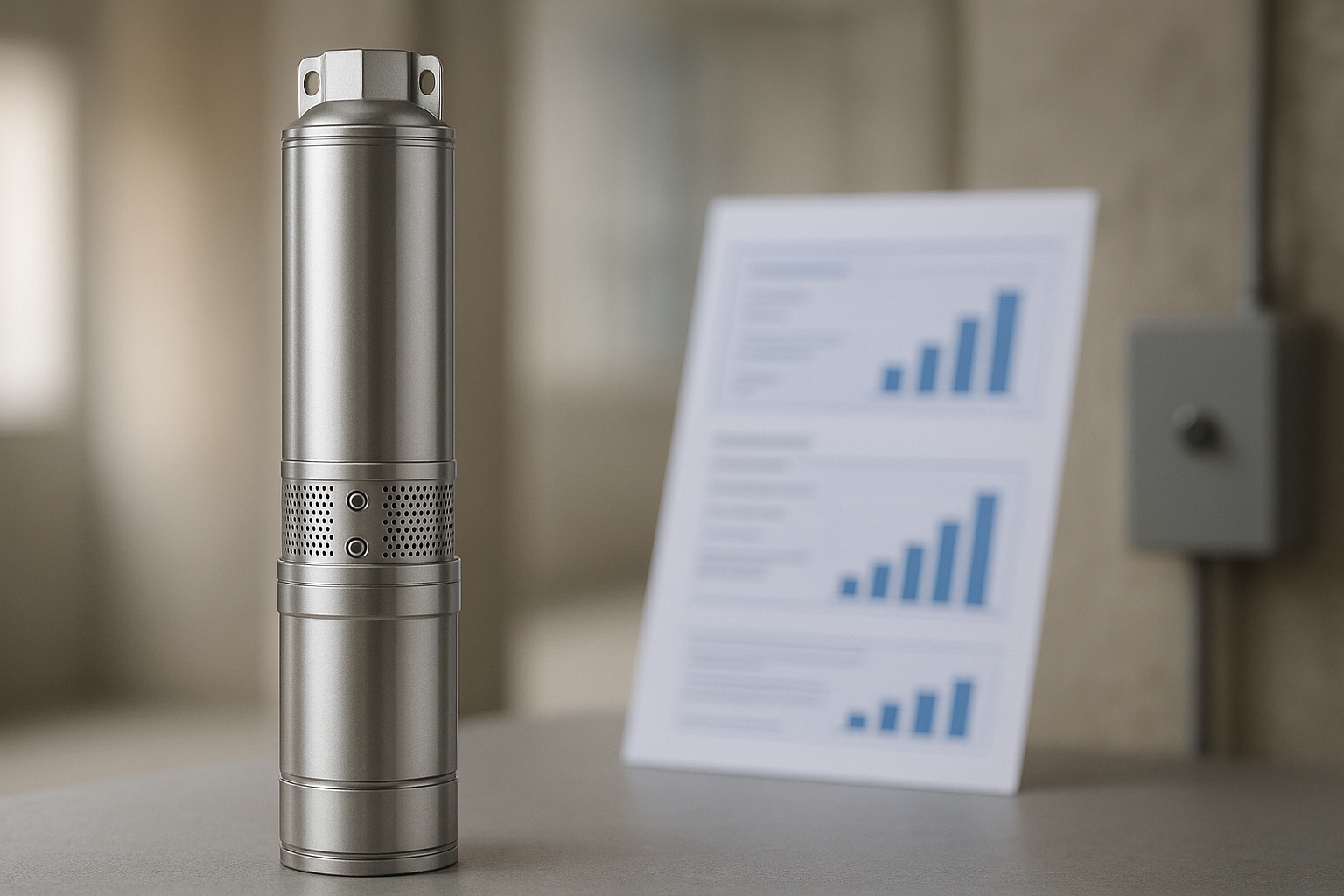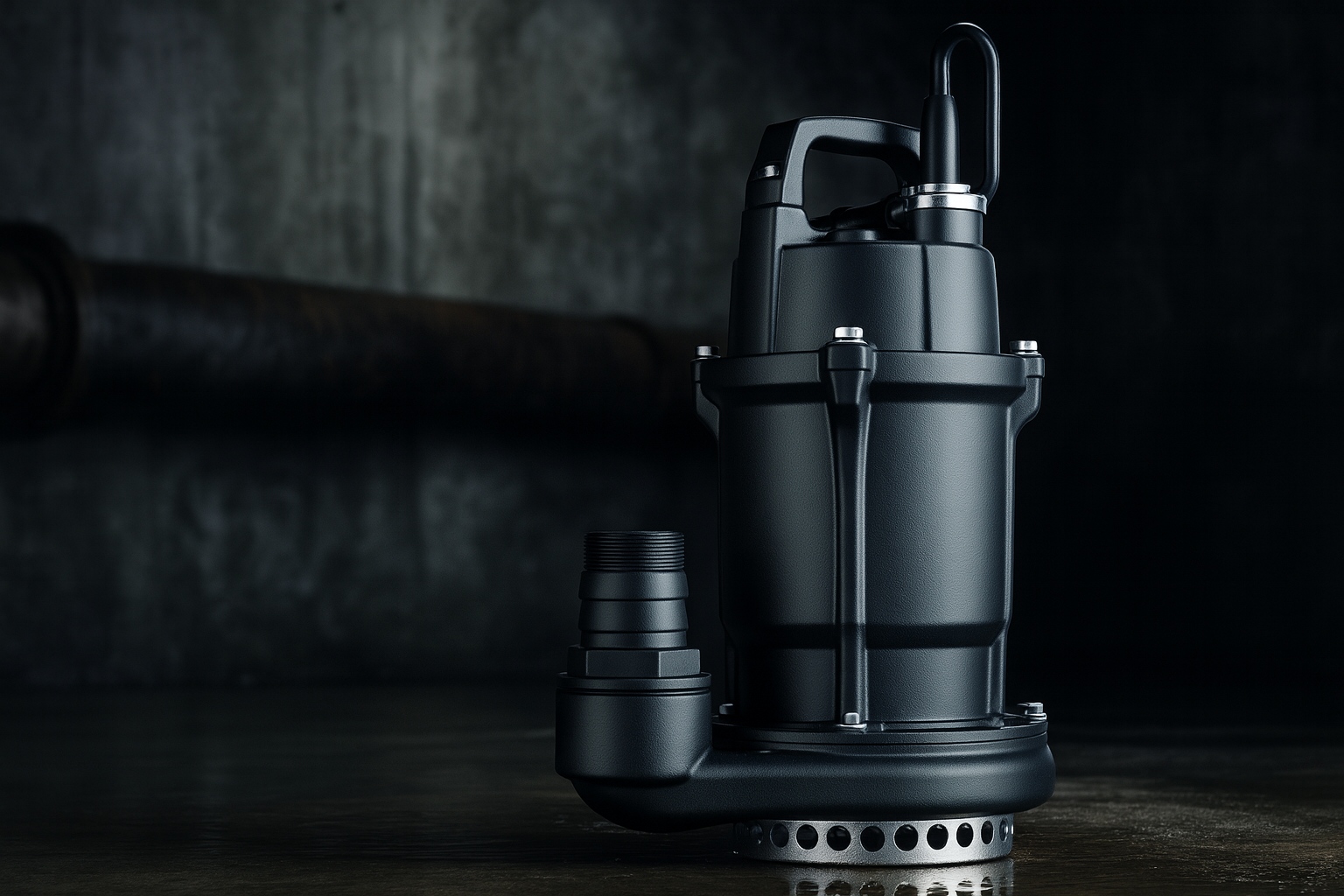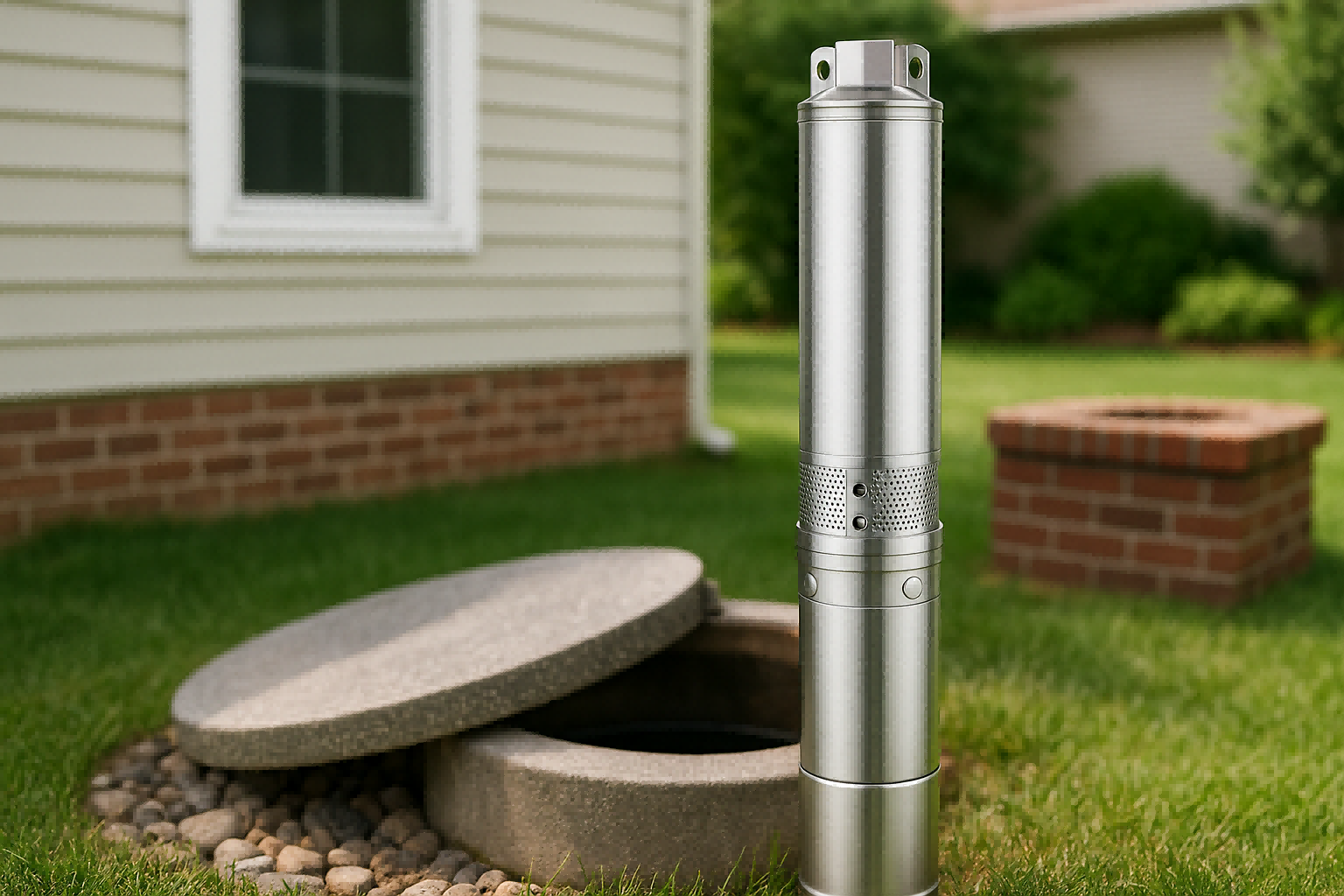Are you watching your pump's electricity bill climb higher each month?
This hidden operating cost can silently eat away at your budget, leaving you wondering where the money is going.
A typical 1.5 hp submersible pump consumes about 2,000 to 2,500 watts of electricity during normal operation.
Its actual usage depends on its efficiency and workload, but this figure is a solid starting point for understanding its energy impact and potential costs over time.

That 2,000-watt figure is just the beginning of the story.
The real electricity consumption of your pump is not a single, fixed number.
It changes based on how the pump starts, how long it runs, and the specific conditions it operates under.
Understanding these details is the key to accurately predicting and managing your energy costs.
Let's break down the numbers and the factors behind them to give you a complete picture of your pump's power needs.
Understanding Running vs. Starting Wattage
Does your generator struggle or even shut down the moment your pump kicks on?
This frustrating issue often comes from underestimating the massive power surge a pump needs just to get going.
Understanding the difference between running and starting watts is essential for stable, reliable operation.
A 1.5 hp pump needs between 2,000 and 2,500 watts to run continuously.
However, it requires a much larger surge of 5,000 to 7,500 watts for a split second to start the motor.
This initial demand is a critical factor for sizing your power supply correctly.
Knowing these two different power figures is crucial for anyone managing a water system.
It affects everything from choosing the right generator to preventing tripped circuit breakers.
The running wattage determines your monthly bill, but the starting wattage determines if your system can even turn on without issues.
Let's dive deeper into what these terms mean and why they are so important for your equipment and budget.
What are Running Watts?
Running watts, or rated watts, measure the continuous power a pump needs to operate after it has started.
This is the number you'll use to calculate your ongoing electricity costs.
For a standard 1.5 hp submersible pump, this figure typically falls between 2,000 and 2,500 watts.
However, this isn't a fixed rule.
The actual running wattage can vary significantly.
Key factors influencing running watts include:
- Pump Efficiency: Newer, high-efficiency models can perform the same work using much less power. Some modern pumps may only use 1,100 to 1,500 watts.
- Pump Age: Older pumps tend to be less efficient. They may require 2,100 watts or more to do the same job a new pump does for less.
- Workload: The amount of water being moved and the height it's being lifted directly impact power use.
Think of running watts as the pump's "cruising speed" on a highway.
It's the steady, consistent energy draw that accounts for the majority of its lifetime electricity consumption.
A lower running wattage directly translates to lower energy bills month after month.
This makes pump efficiency a primary consideration for anyone focused on long-term operational costs.
The Critical Role of Starting Watts
Starting watts, also known as surge watts or inrush current, represent the momentary spike of power a motor needs to overcome inertia and start spinning.
This surge is significantly higher than the running wattage, lasting only for a brief moment.
For a 1.5 hp pump, this initial power draw can range from 5,000 to 7,500 watts.
Ignoring this number is a common cause of electrical problems.
If your power source cannot handle this peak demand, you will experience issues like:
- Tripped circuit breakers or blown fuses.
- Stalling or failure of a generator to power the pump.
- Potential damage to the pump's motor over time due to insufficient starting power.
This is especially critical when sizing a generator or an off-grid power system.
The power source must have a "peak" or "surge" rating that meets or exceeds the pump's starting wattage requirement.
A generator might have a 4,000-watt running capacity, which seems sufficient for a 2,000-watt pump, but if its surge capacity is only 5,000 watts, it will struggle or fail to start a pump that needs a 6,000-watt surge.
Always check the starting wattage specifications for both your pump and your power supply to ensure they are compatible.
How to Calculate Your Pump's Daily and Monthly Electricity Use
Are you trying to budget for your utility bills but find your pump's energy cost is a complete unknown?
Guessing can lead to unexpected expenses that strain your finances.
A simple calculation can give you a clear, reliable estimate of your pump's electricity usage.
To estimate your pump's daily energy use in kilowatt-hours (kWh), simply divide its running wattage by 1,000 and multiply by the number of hours it runs.
For example, a 2,000-watt pump running 8 hours a day uses 16 kWh per day.
This simple formula transforms a technical specification—watts—into a practical, understandable number: kilowatt-hours.
Kilowatt-hours are the unit your electricity provider uses to bill you.
Once you know the daily kWh consumption, you can easily project your weekly, monthly, and even yearly costs.
This allows for better budgeting and helps you see the real financial impact of your water system.
Let's walk through the steps with a clear example.
Step 1: Find the Running Wattage
First, you need to know your pump's running wattage.
This information is usually found on a specification plate on the pump itself or in the owner's manual.
If you cannot find the wattage, you can calculate it if you know the voltage and amperage.
The formula is: Watts = Volts × Amps.
For a 1.5 hp pump, we will use a common average of 2,000 watts for our example.
Remember that this is an average, and your pump might be more or less efficient.
Using the exact number for your model will give you the most accurate results.
Step 2: Calculate Daily Kilowatt-Hours (kWh)
Electricity companies bill for energy in kilowatt-hours (kWh).
One kilowatt is equal to 1,000 watts.
To convert your pump's wattage to kilowatts, you divide by 1,000.
Kilowatts (kW) = Watts / 1,000
In our example: 2,000 Watts / 1,000 = 2 kW
Next, you need to determine how many hours your pump runs per day.
This can vary greatly depending on water demand.
Let's assume the pump runs for a total of 8 hours a day.
Now, calculate the daily energy consumption:
Daily kWh = Kilowatts × Hours per Day
Calculation: 2 kW × 8 Hours = 16 kWh per day
Step 3: Estimate Monthly Usage and Cost
To find the monthly energy consumption, multiply the daily usage by the number of days in the month (typically 30).
Monthly kWh = Daily kWh × 30 Days
Calculation: 16 kWh/day × 30 Days = 480 kWh per month
Finally, to estimate the cost, multiply the monthly kWh by your local electricity rate.
You can find this rate on your utility bill, often listed as dollars per kWh.
If your electricity rate is, for example, $0.15 per kWh:
Estimated Monthly Cost = Monthly kWh × Cost per kWh
Calculation: 480 kWh × $0.15/kWh = $72.00 per month
This table shows how run time affects monthly cost, using our example pump:
| Daily Run Time (Hours) | Daily kWh | Monthly kWh | Estimated Monthly Cost (at $0.15/kWh) |
|---|---|---|---|
| 4 Hours | 8 kWh | 240 kWh | $36.00 |
| 8 Hours | 16 kWh | 480 kWh | $72.00 |
| 12 Hours | 24 kWh | 720 kWh | $108.00 |
This calculation makes it clear: the number of hours your pump runs is just as important as its wattage.
Reducing run time is a powerful way to lower your electricity bill.
Key Factors That Change a Pump's Power Consumption
Do you assume all pumps with the same horsepower rating use the same amount of electricity?
This common misconception can lead to buying an inefficient pump that costs you more in the long run.
Horsepower is just one piece of the puzzle; other factors can drastically alter energy use.
A pump's real-world power consumption is influenced by its efficiency, the voltage of the power supply, and its workload.
For example, a high-efficiency 1.5 hp pump might use 30% less energy than an older, standard model to move the same amount of water.
Thinking about these factors before you purchase or install a pump is essential for managing long-term operating costs.
A slightly more expensive but highly efficient pump can pay for itself through energy savings.
Likewise, ensuring your pump is correctly sized for the job prevents it from working harder and using more power than necessary.
Let's examine these key variables in more detail.
Pump Efficiency: The Most Important Factor
Pump efficiency measures how well a pump converts electrical energy into water-moving power.
Not all pumps are created equal.
A higher efficiency rating means the pump uses less energy to do the same amount of work.
This is the single most significant factor in determining your long-term electricity costs.
Modern pumps, especially those with advanced motor technology like VFDs, are designed for maximum efficiency.
An inefficient, older 1.5 hp pump might consume 2,500 watts, while a highly efficient modern pump could deliver the same performance using only 1,500 watts.
Over thousands of hours of operation, this 1,000-watt difference results in massive energy savings.
When comparing pumps, don't just look at the horsepower and price.
Always look for the efficiency rating.
A pump with a higher initial cost but superior efficiency will almost always be the cheaper option over its lifespan.
Voltage and Amperage
A pump's power consumption in watts remains relatively constant, but the voltage of your power supply determines how much current (amps) it draws.
Power is calculated as Watts = Volts × Amps.
This means that for the same wattage, a higher voltage results in lower amperage.
- On a 110-volt supply: A 1.5 hp pump (let's say 2,200 watts) will draw about 20 amps (2200 W / 110 V).
- On a 230-volt supply: The same pump will draw about 9.6 amps (2200 W / 230 V).
So, why does this matter?
Lower amperage is generally better.
It allows you to use smaller-diameter, less expensive wiring.
It also reduces the amount of heat generated in the wires and motor, which can improve safety and slightly increase the system's overall efficiency.
Most powerful submersible pumps are designed to run on higher voltages (like 230V) for this reason.
Always ensure your pump's voltage पुलिस سے مماثل ہے and your wiring is properly sized for the amperage it will draw.
Head and Flow Rate: The Pump's Workload
The amount of work a pump does directly affects its energy consumption.
This workload is defined by two main parameters: head and flow rate.
-
Total Dynamic Head: This is the total equivalent height the pump must lift the water. It includes the vertical distance from the water level in the well to the destination, plus any friction losses from pipes and fittings. The higher the head, the harder the pump must work and the more power it will use.
-
Flow Rate: This is the volume of water the pump moves in a given amount of time, often measured in gallons per minute (GPM) or liters per minute (LPM). A higher flow rate requires more energy.
A pump's performance is shown on a "pump curve" chart, which illustrates the relationship between head and flow rate.
For any given pump, a higher head will result in a lower flow rate, and vice versa.
Operating a pump at its Best Efficiency Point (BEP) on this curve ensures it's not overworking or underworking, optimizing energy use.
If you choose a pump that is oversized for your needs (e.g., capable of a much higher flow rate than your system requires), it will run inefficiently and waste electricity.
Properly sizing the pump to match your system's specific head and flow requirements is crucial for energy conservation.
Conclusion
A 1.5 hp pump's electrical use is not static; it depends on its specific design and how you use it.
Understanding these factors empowers you to manage and reduce your energy costs effectively.
FAQs
What size generator do I need for a 1.5 hp well pump?
You need a generator that can handle the pump's high starting watts, typically 5,000-7,500 watts. A generator with at least a 7,500-watt peak or surge rating is recommended.
How many amps does a 1.5 hp submersible pump draw?
On a 230-volt circuit, a 1.5 hp pump draws about 9-10 amps. On a 110-volt circuit, it would draw roughly double that, around 20 amps.
Can a 1.5 hp pump run on solar power?
Yes, but it requires a large solar array and a powerful inverter. The system must be sized to handle both the running watts (approx. 2,000W) and a high starting surge.
How many watts does a 1 hp pump use?
A 1 hp pump typically uses around 1,000 to 1,500 watts while running. Its starting wattage would be significantly higher, often in the 3,000 to 4,500-watt range.
How can I reduce my well pump's electricity usage?
Use a high-efficiency pump, fix any leaks in your plumbing, and install a larger pressure tank. A larger tank reduces how often the pump needs to cycle on and off.
Does a 220v pump use less electricity than a 110v?
No, a pump uses the same amount of electricity (watts) regardless of voltage. However, a 220v pump draws half the amps, which allows for smaller wiring and can be slightly more efficient.
How much does it cost to run a well pump for 1 hour?
Using a 2,000-watt pump and an average electricity rate of $0.15/kWh, it would cost $0.30 to run for one hour (2 kW × 1 hour × $0.15/kWh).








